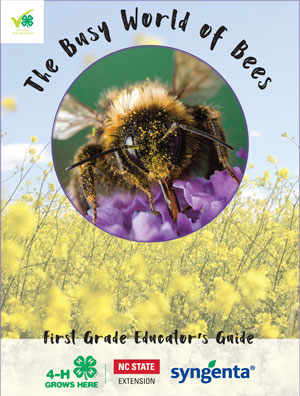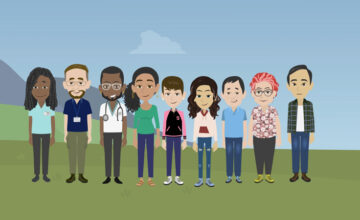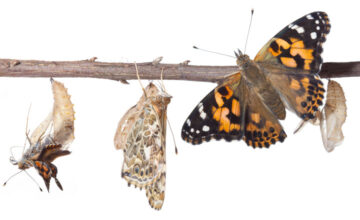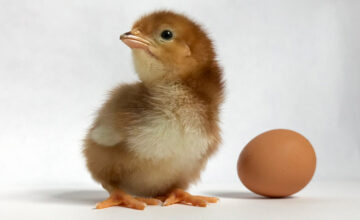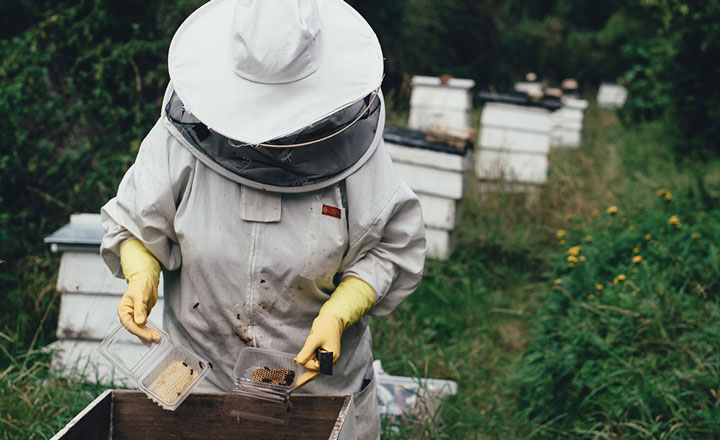
Busy Bees Overview
This curriculum is crafted to engage youth in celebrating bees and their pollinator allies and build an understanding of the benefits that bees and other pollinators provide to humans. In a series of seven lessons, youth will discover that the bee is one of nature’s wonders. Youth will learn that native bees and the European honey bee, help produce delicious and healthy food that humans have been eating for millennia. From the crunch of a fresh apple to the dribble of watermelon juice, nearly one out of every three bites we eat is dependent on bee pollination.
Youth will consider the needs of bees including air, water, light, shelter (nest or hive), and food sources (nectar and pollen) as they explore specific examples of how the environment provides a habitat for honey bees and native pollinators. They will also evaluate the essential structures of bee anatomy and determine how these functions support growth and life cycle development.
Bee behavior provides a captivating platform for active learning. Youth will conduct gameplay and learn dances to mimic how the honey bee shares information, forages for food and pollinates plants. They will identify basic components of bee homes and explore the role that each bee has to promote a productive and diverse ecosystem. Youth will learn the difference between solitary and social bees and understand the different life cycles of each kind of bee.
Youth will also explore the diversity and differences within habitats and garner further understanding of what honey bees, native bees, and other pollinators need to grow and thrive. Youth will build a realization that pollinators need our help. This curriculum concludes with an overview and call to action of how humans can support healthy habitats for bees and their allies. Youth will be given opportunities to learn how to plant a pollinator garden, provide nesting habitats, and strategically manage our insect friends. To demonstrate what they have learned, youth will develop a final presentation, portfolio, or insect collection.
Age range: 6-8
Grade level: 1/Elementary
Introduction to Bees and Pollinators
North Carolina Essential Science Standards (2023):
- LS.K.1.1 Engage in argument from evidence to summarize the characteristics of living organisms and nonliving things in terms of their: structure, growth, changes, movement, basic needs.
- LS.K.1.2 Use models to exemplify how animals use their body parts to obtain food and other resources, protect themselves.
- LS.1.1.1 Obtain, evaluate, and communicate information to summarize the needs of different plants and animals.
- LS.1.1.2 Analyze and interpret data to compare how the needs of plants and animals can be met in different environments
- LS.3.2.1 Carry out investigations to explain the structures and functions of plants and how they are essential for life.
- LS.4.1.1 Use models to explain that plants and animals have external structures that function to support survival.
- LS.5.2.3 Use models to infer the effects that may result from the interconnected relationships of plants and animals to their ecosystem.
- LS.6.1.3 Use models to summarize structural adaptations, processes, and responses that flowering plants use for defense, survival, and reproduction.
Not updated for 2023:
Common Core State Standards (English Language Arts):
- RF.1.3.g – Recognize and read grade-appropriate irregularly spelled words.
Next Generation National Science Standards:
- K-ESS3 – Earth and Human Activity.
- 1-LS1-1 – Use materials to design a solution to a human problem by mimicking how plants and/or animals use external parts to help them survive, grow, and meet their needs.
Youth will consider the needs of bees (honey bees and native bees), including air, water, light, shelter (hives and nests), and food sources (nectar, pollen, and water) as they explore specific examples of how the environment provides a habitat for bees.
Busy Bee Bodies
Essential Science Standards (2023):
- LS.K.1.1 Engage in argument from evidence to summarize the characteristics of living organisms and nonliving things in terms of their: structure, growth, changes, movement, basic needs.
- LS.K.1.2 Use models to exemplify how animals use their body parts to obtain food and other resources, protect themselves.
- LS.4.1.1 Use models to explain that plants and animals have external structures that function to support survival.
- LS.5.2.3 Use models to infer the effects that may result from the interconnected relationships of plants and animals to their ecosystem.
Youth will understand the different body parts of a bee and their functions that enable them to do their work and raise the next generation of bees.
Bee Life Cycles
North Carolina Essential Science Standards (2023):
- LS.2.1.1 Use models to summarize the life cycle of animals including: birth, developing into an adult, reproducing, aging, and death.
- LS.2.1.2 Obtain, evaluate, and communicate information to compare life cycles of different animals.
Youth will study the life cycle of solitary and social bees and construct a model and book about each process.
Bee Homes
Essential Science Standards (2023):
- LS.1.1.1 Obtain, evaluate and communicate information to summarize the needs of different plants and animals.
- LS.1.1.2 Analyze and interpret data to compare how the needs of plants and animals can be met in different environments.
Next Generation National Science Standards:
- 1-LS1-1 – Use materials to design a solution to a human problem by mimicking how plants and/or animals use their external parts to help them survive, grow, and meet their needs.
Youth will consider the many types of bee homes and study the basic structures and environments in which bees build a home.
Bee Behavior and Roles
Essential Science Standards (2023):
- LS.K.1.2 Use models to exemplify how animals use their body parts to obtain food and other resources, protect themselves.
- LS.4.1.2 Use models to explain that animals receive different types of information through their senses, process the information, and respond to the information in different ways.
Next Generation National Science Standards:
- 2-LS2-2 – Develop a simple model that mimics the function of an animal in dispersing seeds or pollinating plants.
Youth will study bee behavior, in particular, that of the honey bee, and learn about the various roles honey bees play in a colony.
Bee Habitats
Essential Science Standards (2023):
- LS.K.1.1 Engage in argument from evidence to summarize the characteristics of living organisms and nonliving things in terms of their: structure, growth, changes, movement, basic needs.
- LS.1.1.1 Obtain, evaluate and communicate information to summarize the needs of different plants and animals.
- LS.1.1.2 Analyze and interpret data to compare how the needs of plants and animals can be met in different environments.
- ESS.4.3.2 Engage in argument from evidence to explain how humans can adapt their behavior to live in changing. environments (e.g. recycling wastes, establishing rain gardens, planting native species to prevent flooding and erosion).
Next Generation National Science Standards:
- 2-LS4-1 – Make observations of plants and animals to compare the diversity of life in different habitats.
- K-ESS3-3 – Communicate solutions that will reduce the impact of humans on the land, water, air, and/or other living things in the local environment.
Youth will summarize the environmental conditions and food sources needed for bees to live, and youth will be able to explain the physical features that enable a bee to successfully forage for nectar and pollen.
Bee Stewardship
Essential Science Standards (2023):
- LS.K.1.1 Engage in argument from evidence to summarize the characteristics of living organisms and nonliving things in terms of their: structure, growth, changes, movement, basic needs.
- LS.1.1.1 Obtain, evaluate and communicate information to summarize the needs of different plants and animals.
- ESS.4.3.2 Engage in argument from evidence to explain how humans can adapt their behavior to live in changing. environments (e.g. recycling wastes, establishing rain gardens, planting native species to prevent flooding and erosion).
- LS.5.2.3 Use models to infer the effects that may result from the interconnected relationships of plants and animals to their ecosystem.
Next Generation National Science Standards:
- 2-LS4-1 – Make observations of plants and animals to compare the diversity of life in different habitats.
- K-ESS3-3 – Communicate solutions that will reduce the impact of humans on the land, water, air, and/or other living things in the local environment.
Youth will summarize ways humans can protect the environment or improve conditions for the growth of bees and pollinators. They will communicate solutions to reduce the impact of humans on land, water, air, and other living creatures in their local ecosystem.

